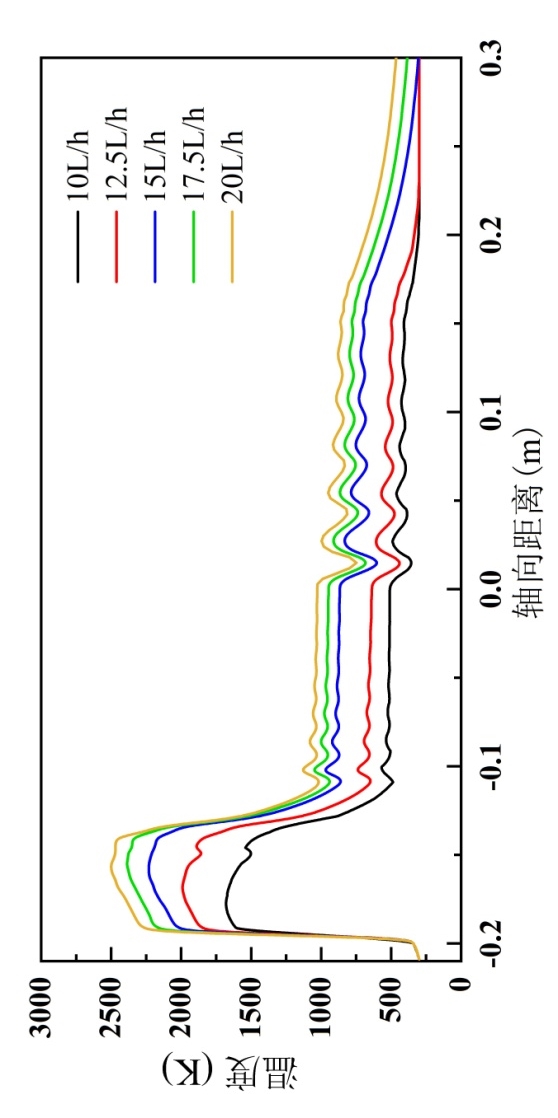名称 : 低温高速火焰喷涂不同煤油与氧气流量对焰流温度的影响
英文名称 : Effect of different kerosene and oxygen flow rates on flame flow temperature
材料 : 431
委托单位 : 中国人民解放军军事科学院国防科技创新研究院
实验单位 : 中国人民解放军军事科学院国防科技创新研究院
实验方法 : 无
实验设备 : 无
实验条件 : 无
说明 : 图表示不同反应物流量下焰流温度与轴向距离的关系。如图所示,煤油与氧气的流量越小,焰流温度越小。通过控制煤油与氧气流量可以使焰流温度发生明显变化,这与HVOF的相关研究结果有所差(HVOF中反应物在流量区间内的变化对焰流温度影响较小)。而在该喷枪中,不同流量的煤油与氧气会导致燃烧室内部的初始压力出现差异(具体见3.7.3),即油氧流量越大,燃烧室内部的初始压力越高。这意味着相同二次氮气压力情况下,更小的煤油与氧气流量会产生更大的注氮压差,导致氮气注入的流量和湍流强度明显提升。这也是低温高速火焰喷涂相比于传统超音速火焰喷涂焰流温度变化明显的主要原因。
英文说明 : The graph represents the relationship between flame flow temperature and axial distance for different reactant flow rates. As shown in the figure, the lower the flow rate of kerosene and oxygen, the lower the flame flow temperature. The flame flow temperature can be changed significantly by controlling the flow rate of kerosene and oxygen, which is different from the results of the study related to HVOF (the change of reactant in the flow rate interval in HVOF has less effect on the flame flow temperature). In this gun, the different flow rates of kerosene and oxygen lead to a difference in the initial pressure inside the combustion chamber (see 3.7.3), i.e., the higher the flow rate of oil and oxygen, the higher the initial pressure inside the combustion chamber. This means that for the same secondary nitrogen pressure, a smaller kerosene and oxygen flow rate will produce a larger differential nitrogen injection pressure, resulting in a significantly higher flow rate and turbulence intensity for nitrogen injection. This is the main reason for the significant change in flame flow temperature in low temperature high speed flame spraying compared to conventional supersonic flame spraying.
数据来源 : 分析测试报告
重点项目名称 : 废旧重型装备损伤检测与再制造形性调控技术
项目所属数据集 : 低温高速火焰喷涂枪设计与建模数据数据集






















